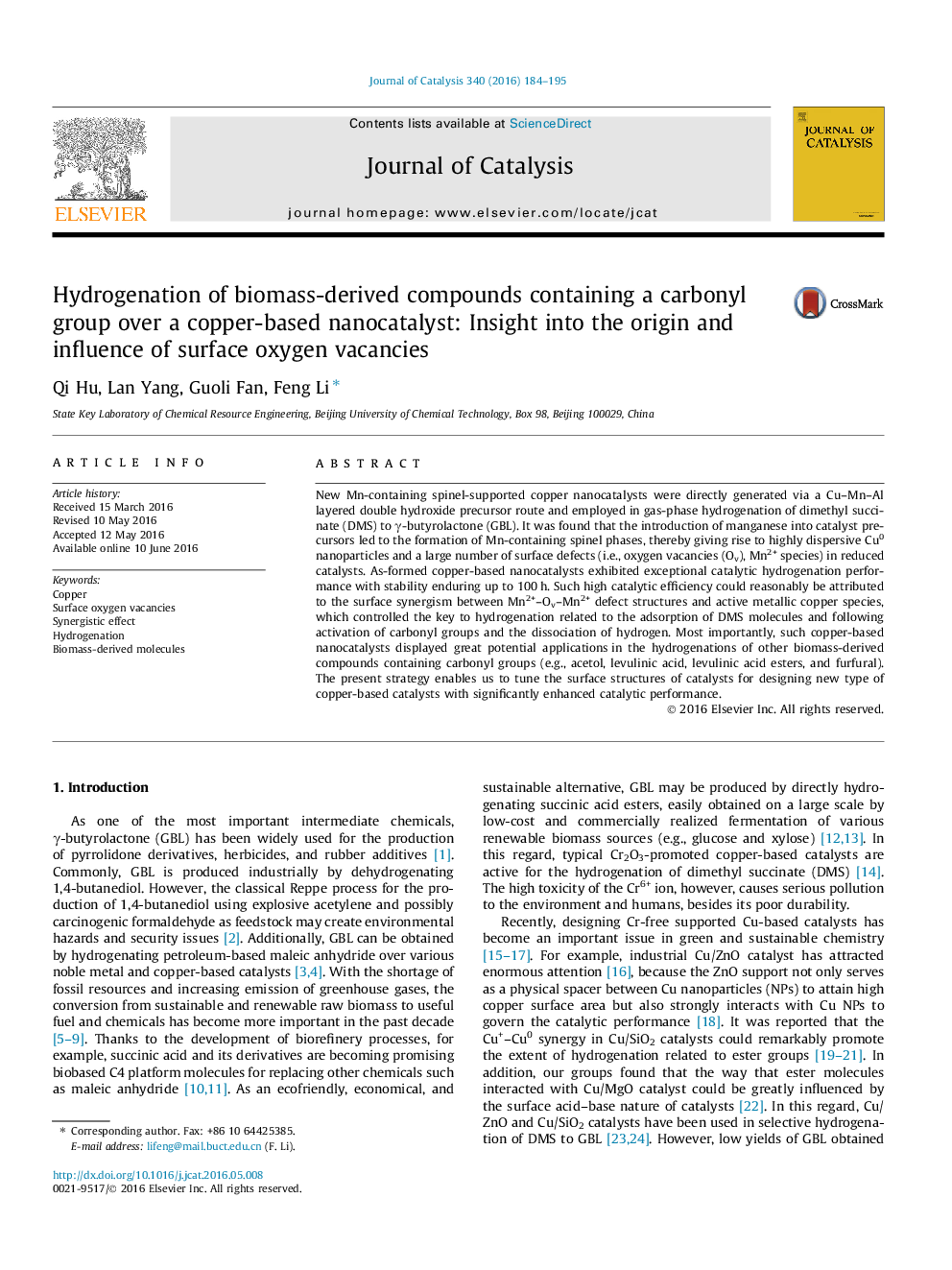| Article ID | Journal | Published Year | Pages | File Type |
|---|---|---|---|---|
| 60520 | Journal of Catalysis | 2016 | 12 Pages |
•Supported copper catalysts were generated via a CuMnAl-LDH precursor route.•Highly dispersed Cu0 nanoparticles and surface oxygen vacancies were formed.•High catalytic performance was achieved in gas-phase biomass hydrogenation.•Synergism between surface defects and metallic copper species was confirmed.
New Mn-containing spinel-supported copper nanocatalysts were directly generated via a Cu–Mn–Al layered double hydroxide precursor route and employed in gas-phase hydrogenation of dimethyl succinate (DMS) to γ-butyrolactone (GBL). It was found that the introduction of manganese into catalyst precursors led to the formation of Mn-containing spinel phases, thereby giving rise to highly dispersive Cu0 nanoparticles and a large number of surface defects (i.e., oxygen vacancies (Ov), Mn2+ species) in reduced catalysts. As-formed copper-based nanocatalysts exhibited exceptional catalytic hydrogenation performance with stability enduring up to 100 h. Such high catalytic efficiency could reasonably be attributed to the surface synergism between Mn2+–Ov–Mn2+ defect structures and active metallic copper species, which controlled the key to hydrogenation related to the adsorption of DMS molecules and following activation of carbonyl groups and the dissociation of hydrogen. Most importantly, such copper-based nanocatalysts displayed great potential applications in the hydrogenations of other biomass-derived compounds containing carbonyl groups (e.g., acetol, levulinic acid, levulinic acid esters, and furfural). The present strategy enables us to tune the surface structures of catalysts for designing new type of copper-based catalysts with significantly enhanced catalytic performance.
Graphical abstractFigure optionsDownload full-size imageDownload high-quality image (97 K)Download as PowerPoint slide
